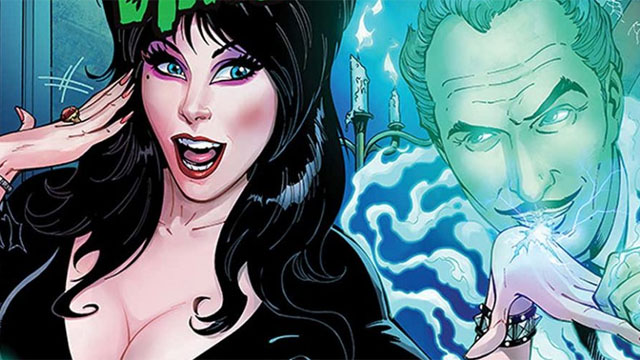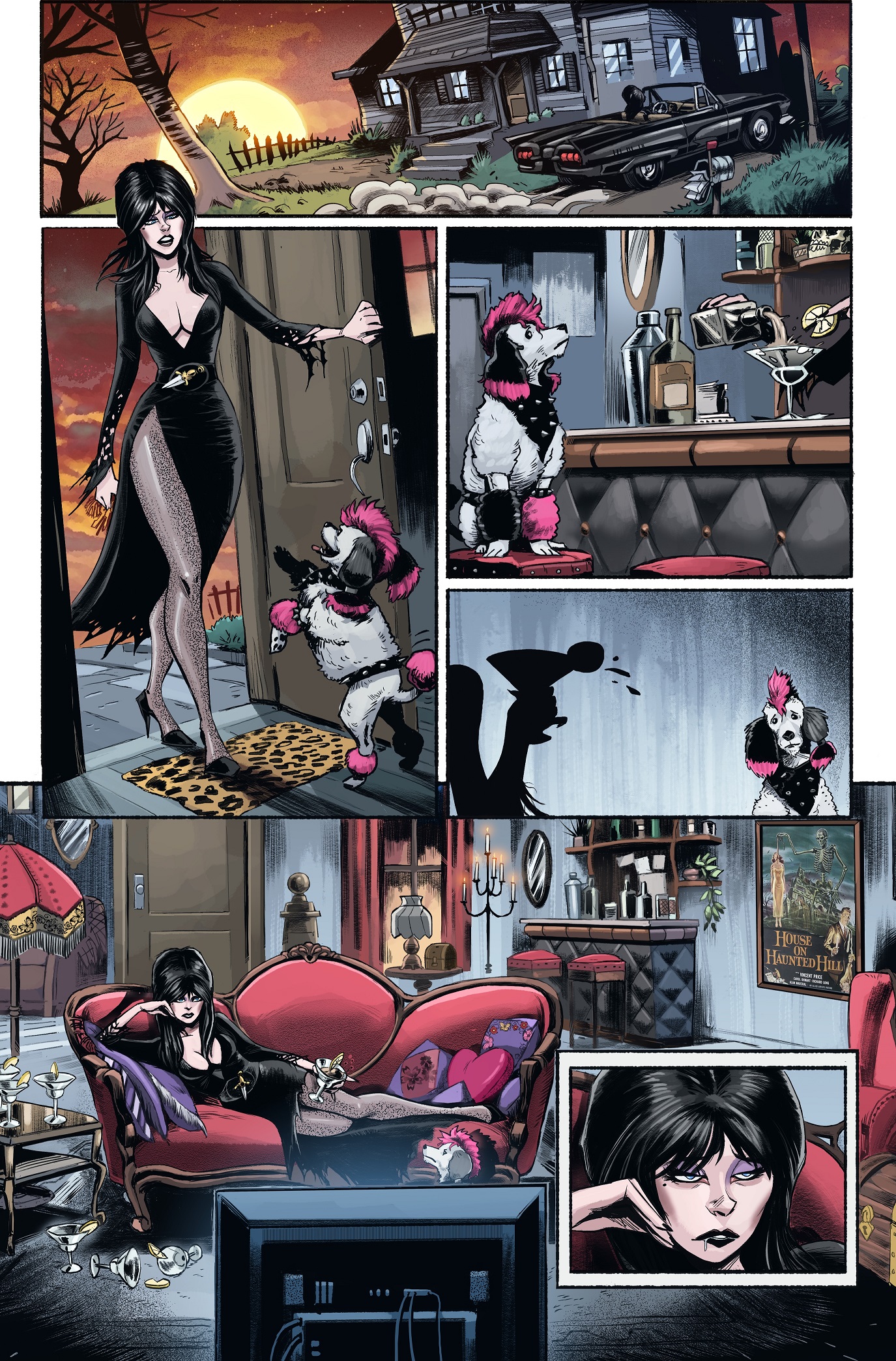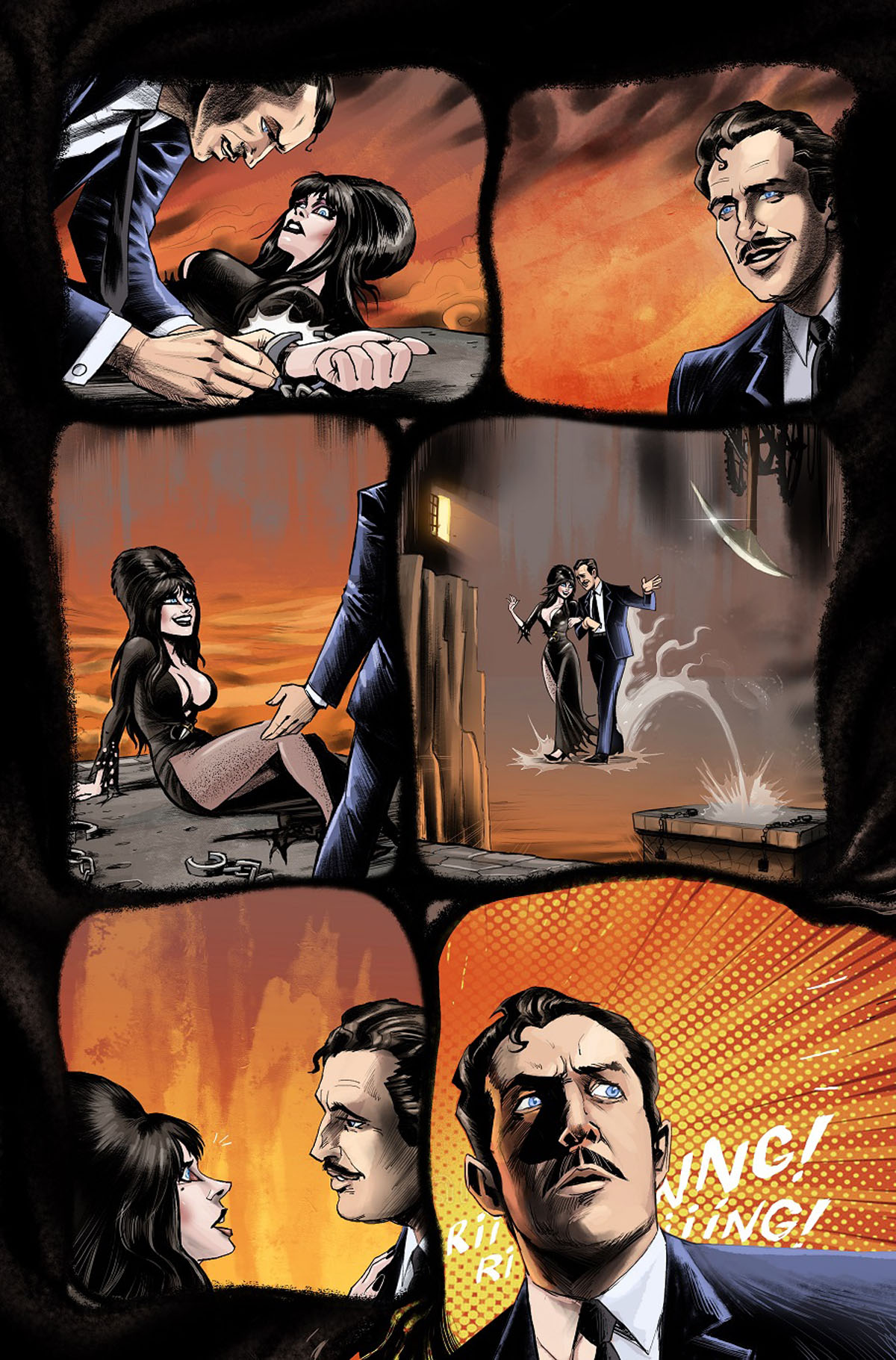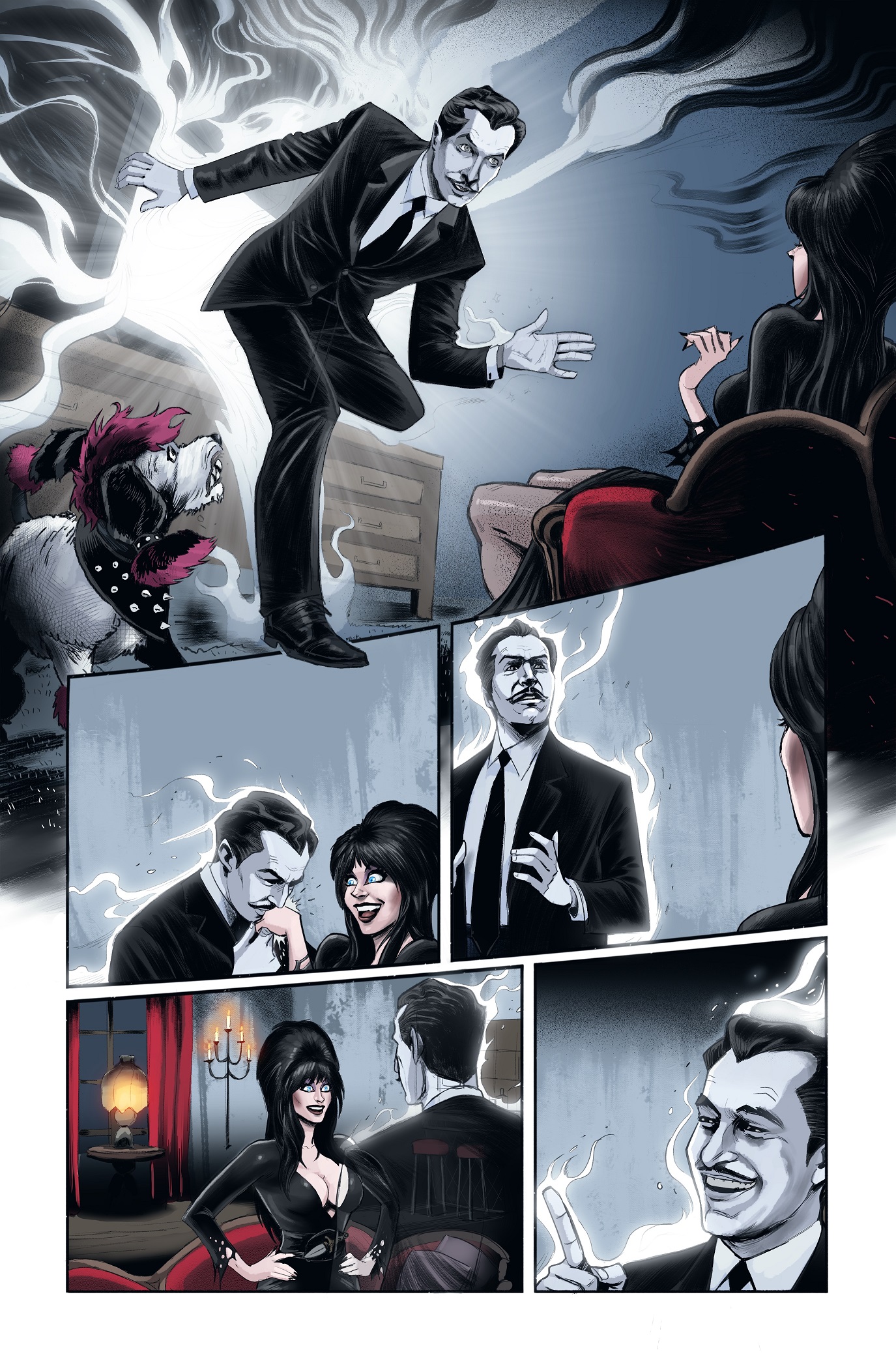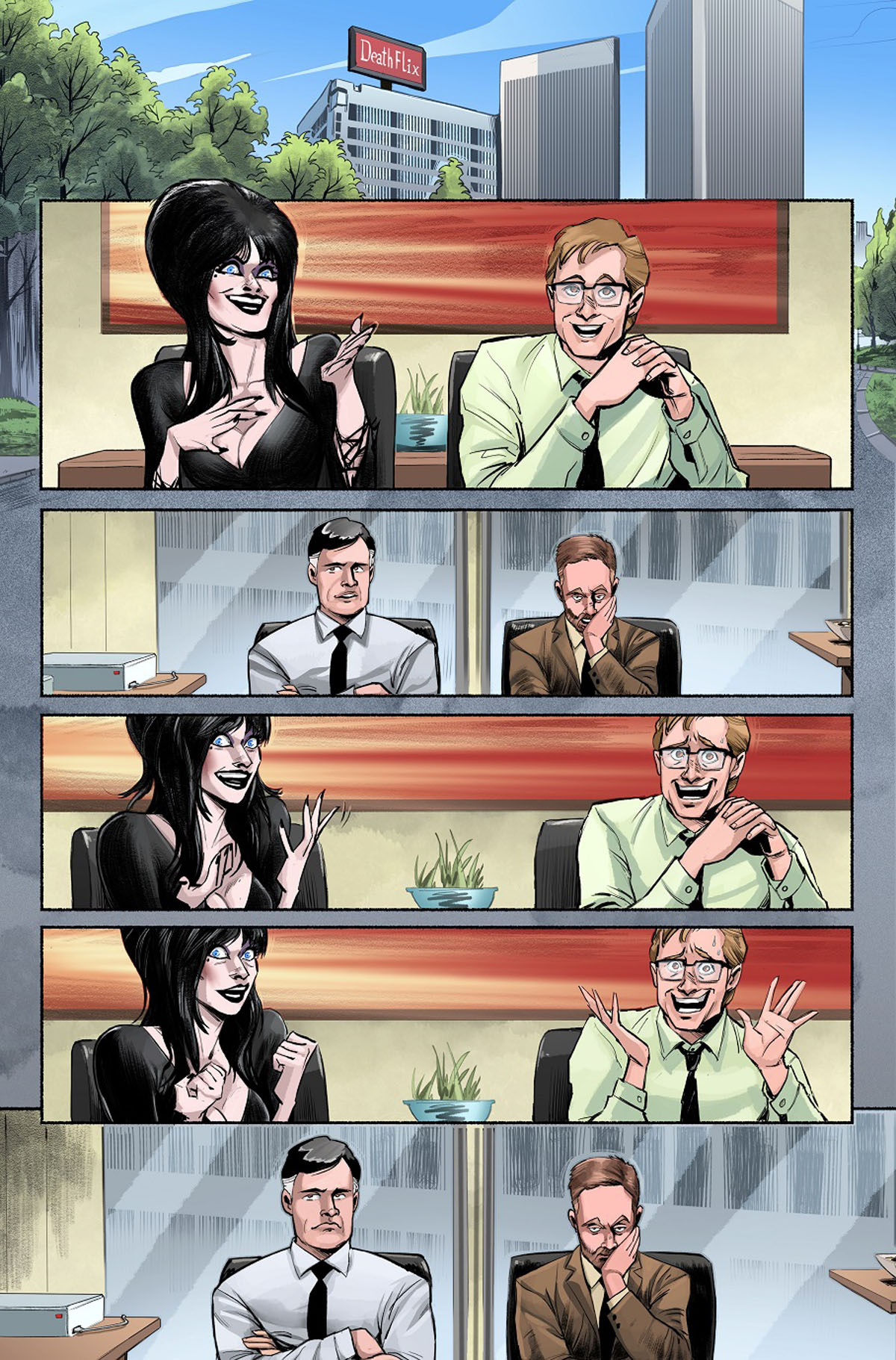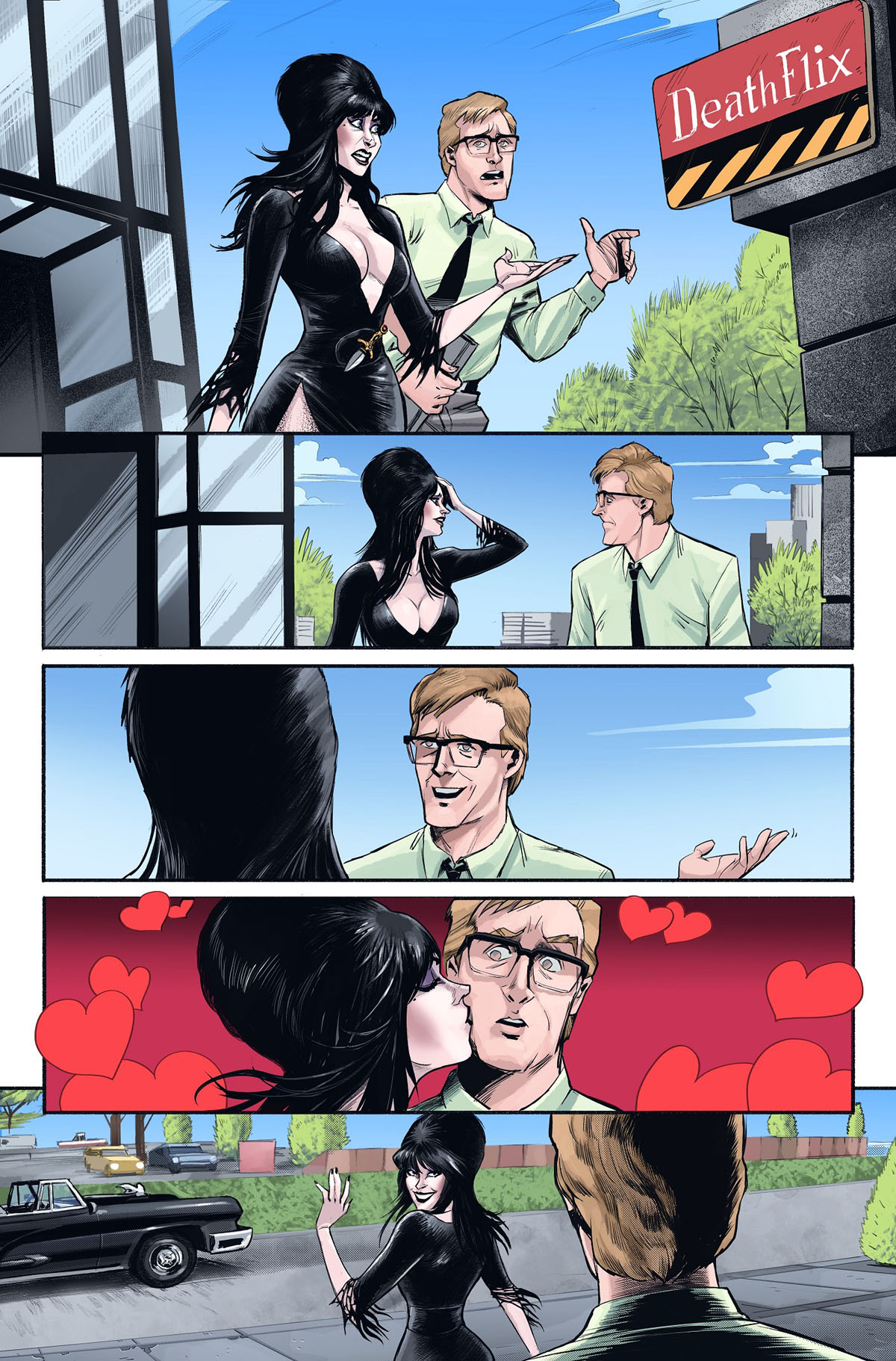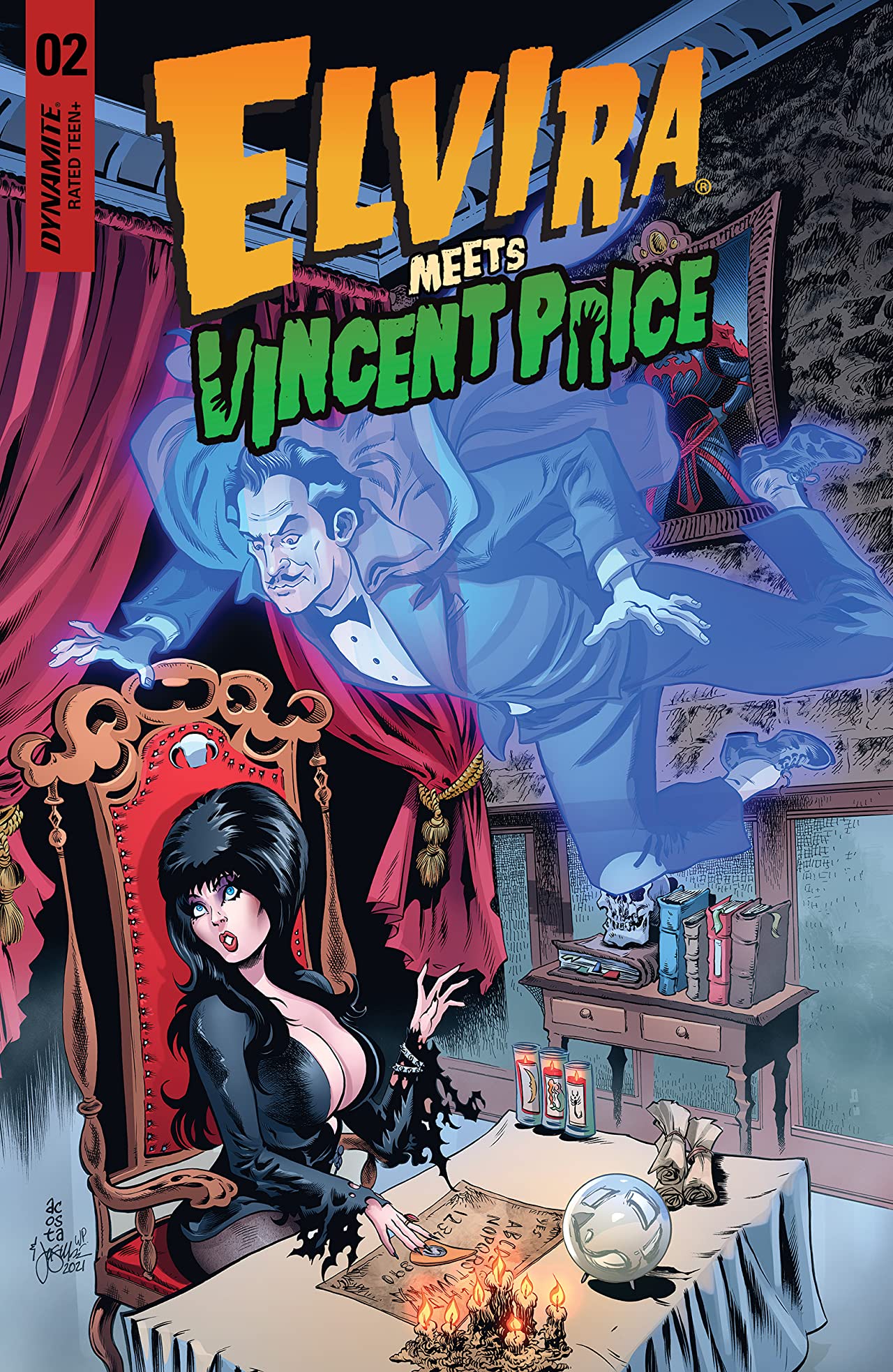When Elvira first captured hearts and funny bones in the ’80s, few could have guessed that she would endure for decades. Cassandra Peterson, the actress and comedian concealed under Elvira’s layers of ghostly makeup and fearless parody, embodied the icon both in and out of character. Elvira is Cassandra Peterson, and vice versa.
Now, writer David Avallone and artist Juan Samu are working on the new Dynamite Entertainment comic, Elvira Meets Vincent Price, a series in which the famed horror hostess teams up with the ghost of movie legend Vincent Price. Their mission? Recover a forgotten Hollywood film to prevent a world-ending catastrophe.
We recently spoke with Avallone, and the resulting discussion is as entertaining as it is illuminating. We’ve also got a few of Samu’s pages to share!
Superhero Hype: Elvira Meets Vincent Price follows Elvira and an incorporeal Vincent Price as they track down a lost Hollywood film. The premise borrows from the bizarre true story of a “lost” Vincent Price film called The Aries Computer. Have you found anything of interest related to The Aries Computer that informed your script? Or is its history merely a concept you liked and ran with?
David Avallone: I thought the story was a funny one, and I borrowed it for the basic premise, but I wildly embellished it. As far as I know – and hope – The Aries Computer doesn’t hold the key to the future of the world. The plot that I gave the series (and the fictional movie Rise of the Ram, which echoes The Aries Computer) is intended to evoke some of the horror movies of the era, which frequently involved some ancient artifact or old Devil bringing about some catastrophe.
RELATED: Elvira is Co-Writing Her Own Comic, Elvira: The Omega Ma’am
What do Old Hollywood and Elvira share (besides Vincent Price) that make blending them so perfect?
I did a lot of research into Vincent Price, and came away loving him even more. He was a true renaissance man, a man of culture and art, and had a grand theatricality on stage, and in life. Like Elvira, he marched to a different drummer, though owing to the times he was living and working in, he did so in a more quiet and private way. On screen, his monsters and villains and tragic heroes provide larger-than-life entertainment with a capital E, and Elvira is very much the same. They challenge the audience to dare live large, to take big swings, and to be shameless in the best possible way. They challenge the very idea of shame. For me, that’s what makes them icons, and perfect partners. They are generations apart, a man and a woman, but their perspective on the world, to me, seems in perfect lockstep.
Elvira came in and broke convention in the ’80s by poking fun at misogyny. Because our culture is now reckoning with misogyny on a larger scale, do you feel that Elvira is more relevant today than she was when she first debuted?
This makes me think of the word “burlesque.” A lot of people think it just means “art strippers,” but the definition of the word, and the original conception of the art form, is parody. Elvira is pure burlesque: an absolute sex symbol, as beautiful and alluring as any there has ever been, while also mocking the idea of sex symbols.
RELATED: Read Paul Dini’s Story From Elvira, Mistress of the Dark #1
Prior to Elvira, the history of goth vamps is full of languid, dignified, vaguely European femme fatales. Elvira LOOKS exactly like one of them… but she’s a highly animated, incredibly American, girl-next-door character. She cracks jokes like a Catskills comic. It’s transgressive: the sex symbol isn’t supposed to make puns that would cause Mel Brooks to blush. She’s supposed to stand there and be an object of lust, not make fun of you (and the world) for that lust. And to be honest – like a whole lot of parody – there are fans who love her who aren’t necessarily in on the joke. Like when Stephen Colbert did his Bill O’Reilly-esque character, at least some of his audience were conservatives who took his absurdities at face value.
Cassandra Peterson, the “real” Elvira, has been a go- go dancer and a showgirl and a pop singer… but her last “stop” before she became Elvira was The Groundlings, the world-famous comedy school/theater. She’s of the same generation that produced her good friends Paul Reubens (Pee Wee Herman) and Phil Hartman. Once you know that, it’s easier to understand what Elvira is, and how she intends to strike the audience. She is a sketch comedy character who presents herself as a classic sex symbol, and Cassandra has been making that combination work since the beginning.
Which Elvira moments call to you while writing your scripts?
Before I wrote my first Elvira script, maybe… three years ago, I think… I watched the original movie again… just to make sure I was going to get her “right.” My favorite jokes and scenes from that movie are probably the same as everyone else’s. When she bonks her head and the himbo asks, “How’s your head?” and she replies “I haven’t had any complaints yet.”
RELATED: The Dynamite Report #1: Time To DIE!namite!
I have noticed that when I’m writing jokes for the comic, and I think “hmmm… I think I’ve gone too far…” but decide to leave it in. Those are always the readers’ favorite jokes. I end up seeing those panels reposted on Instagram, and then I know I’m doing right by Elvira. I have learned that nothing is “too far.” Cassandra reads all the scripts, and she’s never said “too far.” A couple of times she HAS said “go farther.” This series has an issue titled “Ankhs for the Memories” (because Ancient Egypt is part of the plot,) and Cassandra wrote back, “C’mon… it’s gotta be ‘Ankhs for the Mammeries.’” It’s like I forgot what I was supposed to be doing for a minute, but she brought me back in line.
What do you think fans will enjoy most about Elvira Meets Vincent Price? What kinds of fan service moments were you able to put in as you told this story?
I don’t want to spoil any of the jokes, but there’s a lot of references to Vincent’s movies spread throughout the series. The first issue has hat tips (unsubtle ones) to House on Haunted Hill and The Pit and the Pendulum. The second issue’s plot borrows elements from The Abominable Doctor Phibes and The Fall of the House of Usher. Throughout, Vincent’s appearance changes to a variety of his movie characters, depending on the circumstances. When he’s telling Elvira a story about Ancient Egypt, for example, he looks like Baka, the Master Builder, who he played in The Ten Commandments. There’s a lot of that.
RELATED: The Dynamite Report #4: Christopher Priest Revamps Vampirella
And aside from Vincent’s movies, there’s a lot of other movie references, as there always are in my work… in this case everything from the Laurel and Hardy movie Sons of the Desert to Raiders of the Lost Ark. The first issue opens with Elvira and a (disguised) version of me pitching a show to a streaming network called “DeathFlix” and striking out, and that kicks off the story. It’s a crazy romp, and I think the fans will dig it.
Elvira Meets Vincent Price #1 will hit comic book stores on Wednesday, August 4.
Recommended Reading: ELVIRA: Mistress of the Dark Vol. 1
We are also a participant in the Amazon Services LLC Associates Program. This affiliate advertising program also provides a means to earn fees by linking to Amazon.com and affiliated sites.
